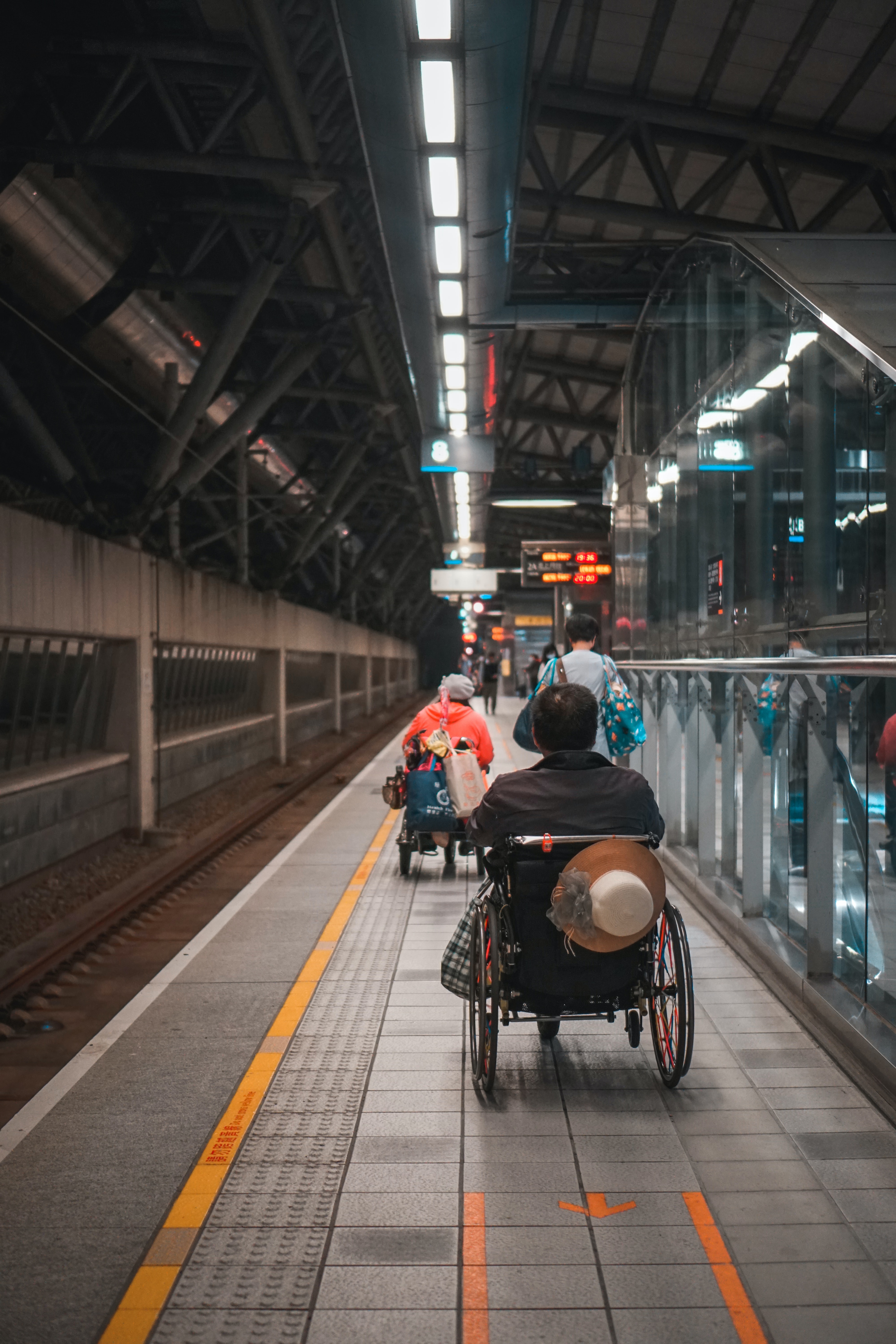The World Health Organisation (WHO) has estimated that over 1 billion people are living with some form of disability worldwide – that’s about 15% of the world’s total population. And, with trends in life expectancy and the prevalence of chronic health conditions on the rise, the number of disabled people living in cities is expected to only increase in the coming years.
Despite this, many cities remain unfriendly and widely inaccessible to their disabled populations.
Those with physical disabilities can be presented with barriers built into the smallest details of manoeuvring around the city, which could be seen as trivial and unobtrusive to the average able-bodied commuter.
From impassable steep kerbs, to sandwich board-cluttered streets, to shops and restaurants without lifts- – the makeup of the typical streetscape is lined with potential obstacles and restrictions. Moreover, for people who are neurodivergent or learning disabled, a bustling urban environment can cause harm through sensory overload, anxiety and stress.
Transport is another everyday aspect of city living where disabled people can feel excluded.
In many big cities, the metro is the most convenient way to travel. A recent study found that only 31% of London Underground stations are accessible by wheelchair or mobility scooter from street to platform. Considering that a number of those still require staff assistance and ramps to board trains, the number of fully accessible stations is even less. Another study found that similarly poor access exists across the world’s major metro systems.
Disabled people commonly report that accessibility worries can be a major deterrent to engaging in public spaces that are unfamiliar.
“I must always be thinking about accessibility in the back of my head” says Grace, in a Guardian article where readers with a disability share their experiences of city access. “The barriers start before a trip begins” adds Stef, talking about autistic-unfriendly travel.
Discussing New York, Lucy describes how accessibility barriers can make her feel excluded in her own city: “I often end up feeling like a second-class citizen who doesn’t even appear in the thoughts of city planners”.
Numerous studies have found that disabled people are less likely to work or socialise in areas with poor accessibility. Moreover, cities are losing out on economic benefits from inaccessibility-– the ‘purple pound’ (signifying the spending power of disabled tourists) was estimated to be worth around £250bn in the UK pre-pandemic.
Whilst disabled access is rising in prioritisation amongst city and transport planning, there is undoubtedly still a long way to go in many cities. But there are also some good examples of cities taking action to make their spaces accessible to all.
Opening up Chester’s ancient streets
The first British city to win the coveted European Access City Award, Chester is now regarded as the UK’s most accessible city. Famous for its Roman heritage, the city pledged to make its many tourist sites fully accessible for disabled people–a sizeable challenge, considering the city’s ancient streets and medieval walls.
Chester has implemented fully accessible, wide passageways with tactile paving and added handrails above the walls and famous Chester Rows, which were previously only accessible by steps. Narrow and secluded walkways have now been connected by 17 wheelchair access points. In addition, there are disabled access focused tours, access guides, signs and online information platforms.
Transport has been revamped, as council policy requires all public buses and licensed taxis to have wheelchair access, induction loops and colour-contrast handles. The council has also committed to including a specifically designed Changing Places toilet in all new developments, adding to the numerous facilities already deployed in busy spots.
The successful implementation of an extensive access plan has not been quick, but is rather the results of Cheshire West and Chester Council’s long-term commitment to improving disability inclusion. The council has had a designated access officer since 1991 and a disability forum of 16 organisations that actively promote accessibility in new developments – such as the multi-million pound Storyhouse arts centre that has received accolades for its standard of access.
Chester’s award has seen the city become a model to other city governments from across the world, who are now visiting the city for inspiration. “We’ve had them from Dublin to Israel, they want to see how it’s done”, says Graham Garnett, Chester’s previous access officer.
Accessible route mapping in Seattle
Primarily designed for commuters in vehicles, most online routing maps can be unhelpful for people with limited mobility, lacking detail on hills, steep kerbs and access points. Aiming to rectify this, however, is the University of Washington’s Taskar Center for Accessible Technology, who have designed the AccessMap platform for the hilly city of Seattle.
AccessMap allows users to receive tailored routes dependent on customised preferences, such as only showing sloped pavements or limiting the incline of streets. As platforms such as Google Maps currently don’t take such factors into account, AccessMap will provide the user with an alternative route that is not based upon journey time or distance, but rather on safety and ease of access.
The map even uses recent data from the Seattle Department of Transportation to accommodate for real-world conditions on pedestrian pathways, such as a construction site or potentially hazardous surface conditions. In addition, the developers are aiming to turn the platform into an open street map, where users and volunteers can create up-to-date entries about the conditions they encounter.
The research team behind the project want to use their development to provide the toolkits and instructions to create similar maps in other cities. They have identified 10 urban areas in the US with the potential to replicate successful platforms, such as New York, Boston and San Francisco.
Final thoughts
Chester’s motivation in becoming fully accessible is exemplary of a city that is leading the way in disability inclusion, ensuring that it is inherent to city government planning. Likewise, the mapping project in Seattle shows how alternative tools can enhance the experiences of disabled people.
But although these examples are encouraging, they are exceptions. As long as planners fail to acknowledge the needs of people with disabilities, most of our cities will remain, in effect, no-go areas for a substantial section of society.
Further reading: more on diversity and inclusion from The Knowledge Exchange Blog:
Share
Related Posts
With information now so accessible, it’s easy to assume that whenever you have a question you can simply tap it into a search engine. But, while the internet and digital search tools are undoubtedly useful for checking basic facts, when ....
By Ian Babelon A new-old concept for proximity “Are we there yet?” Parents may patiently nod to their children’s insistent nudges on a 20-minute journey to… somewhere. Quite rightly, researchers have asked: twenty minutes to what? The answer may well ....



